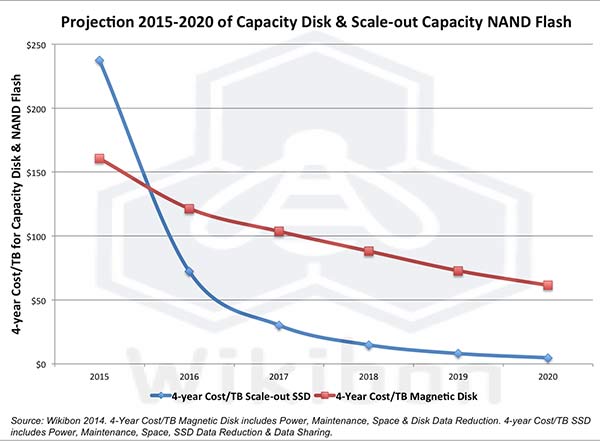A report on the state of the flash memory and disk storage industries has predicted that using SSDs will become more economical than HDDs for most purposes from 2016 onwards. The prediction applies to "almost all storage" but it seems like the largest capacities will remain the forte of spinning disks for a bit longer.

Wikibon followed up its 2009 report with another, recently, focussing on the 'Evolution of All Flash Array Architectures'. It concluded, in summary, that over the next two years it will be more cost effective to invest in SSDs for most storage requirement cases.
Of course one of the main factors driving this storage revolution is the ever decreasing cost of flash memory and thus SSDs. While HDD costs are falling and capacities increasing they are being outpaced by what flash can offer. For an analysis to appeal to business and enterprise Wikibon's costs comparison takes into account power and maintenance costs over a four year period.

Wikibon says that flash prices are down and will continue to fall sharply due to consumer demand. Furthermore its use in data centres and enterprise will increase with new architectures and philosophies. It sees the end goal of the electronic data centres as removing all mechanical components except for a few cooling pumps and fans.
Why aim to completely eliminate mechanical storage? A fully flash based data centre will enhance application design which has been hobbled by mechanical storage, says the research firm. "Most of the problems in operating current applications are storage related, and almost all the constraints in application design are storage related," asserts Wikibon. Moving to flash will help fix this problematic impact on businesses and we could see new kinds of applications emerge.













